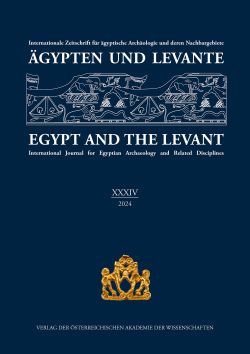
Ägypten und Levante 34, pp. 275-304, 2025/02/05
Internationale Zeitschrift für ägyptische Archäologie und deren Nachbargebiete
International Journal for Egyptian Archaeology and Related Disciplines
Megiddo is the most prominent example of urban centres restored by the Assyrians in the Levant during the late 8th and 7th centuries BCE Past excavations revealed the remains of a city with a distinct orthogonal plan and large administrative structures functioning as the capital of a Neo-Assyrian province. The social composition and duration of its existence, specifically after the Assyrian withdrawal, are disputed. Due to the extensive exposure of the surface layers in the 1920s, it was believed that almost no undisturbed remains were left for modern field research. However, recent excavations in the north-western sector of the mound have unearthed a sequence of layers, dated to the later phases of the Iron Age, that allow a high-resolution study of the city’s development and the identity of its inhabitants in the post-732 BCE era. Especially noteworthy among the finds are the significant quantities of imported Egyptian and East Greek pottery.
Keywords: Megiddo; Iron Age IIC; Assyria; Egypt; Assyrianised Pottery; Egyptian Pottery; East Greek Pottery; Deportees; Egyptians; Greek Mercenaries; Lydia; Necho II; Josiah; Biblical History.